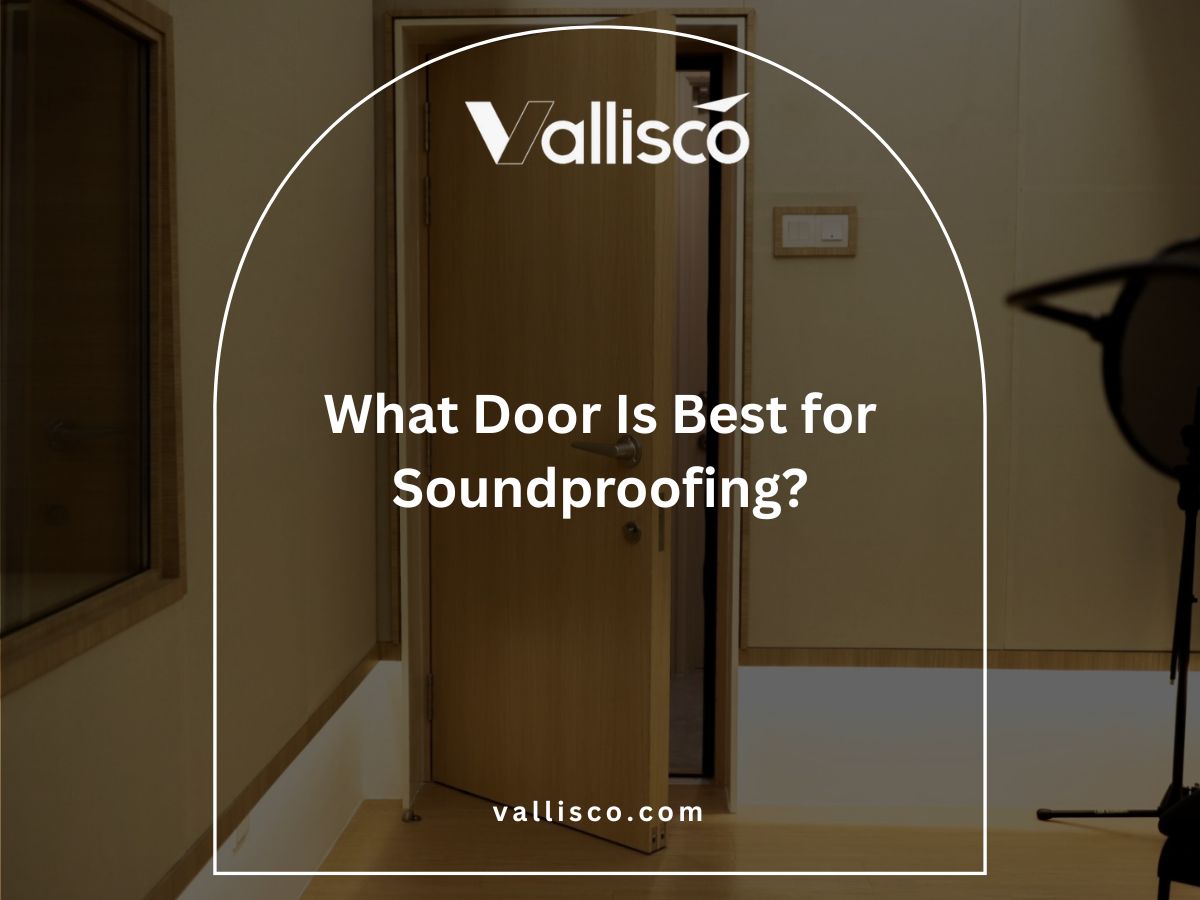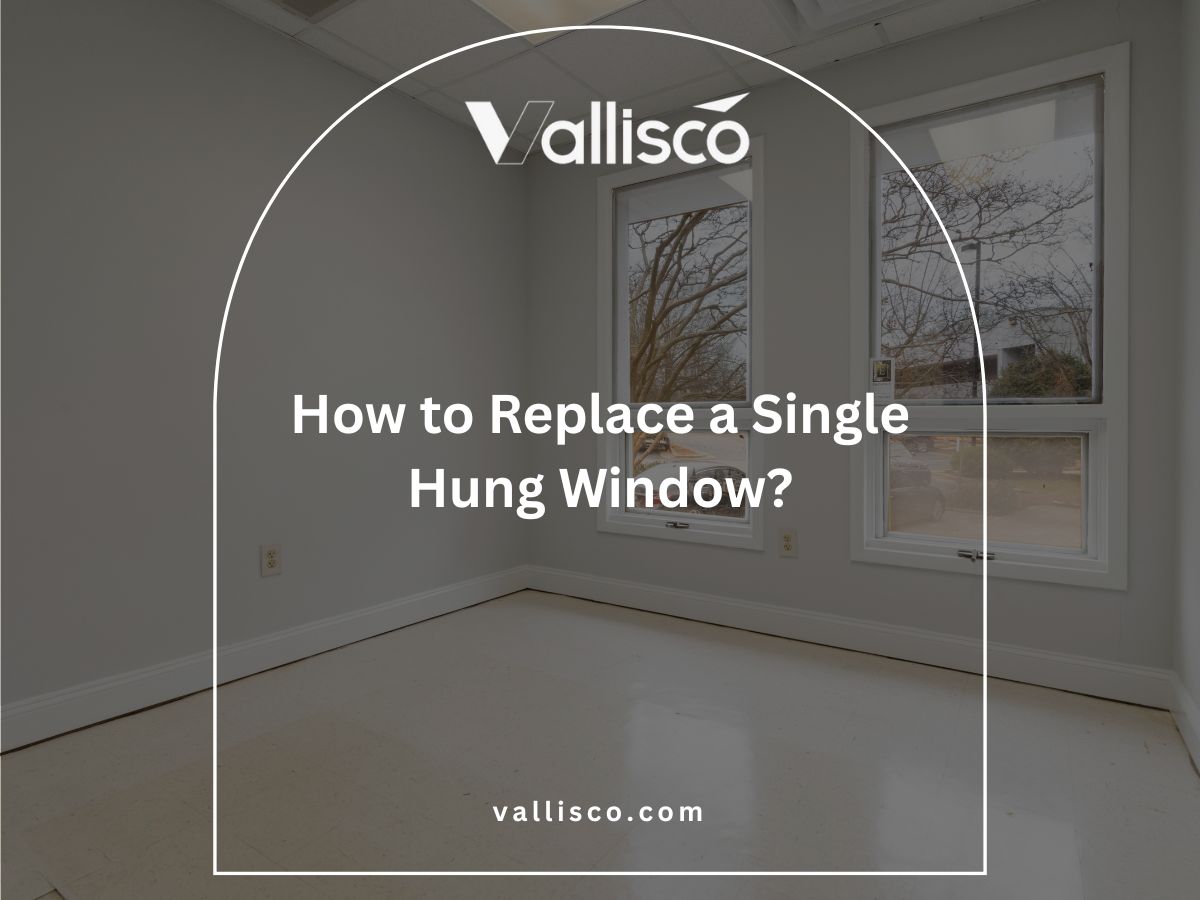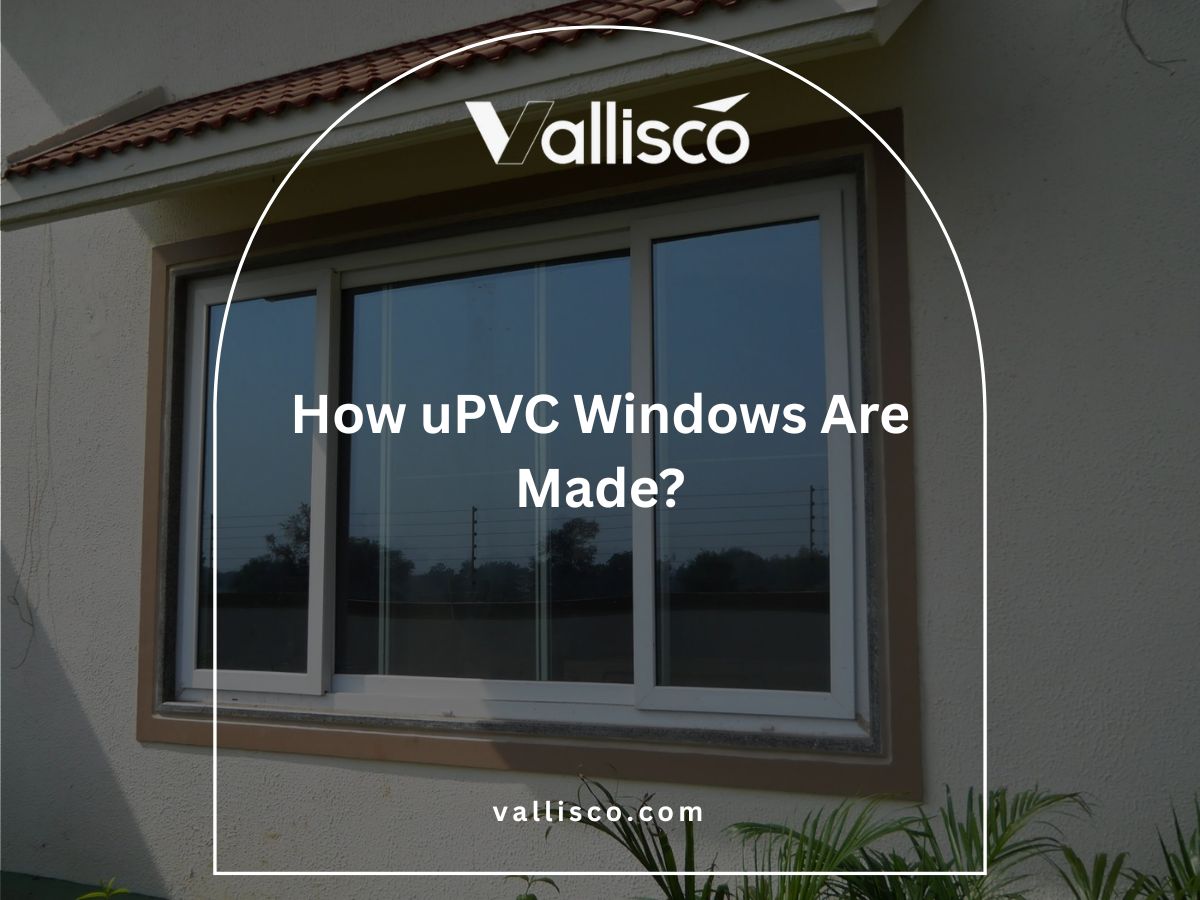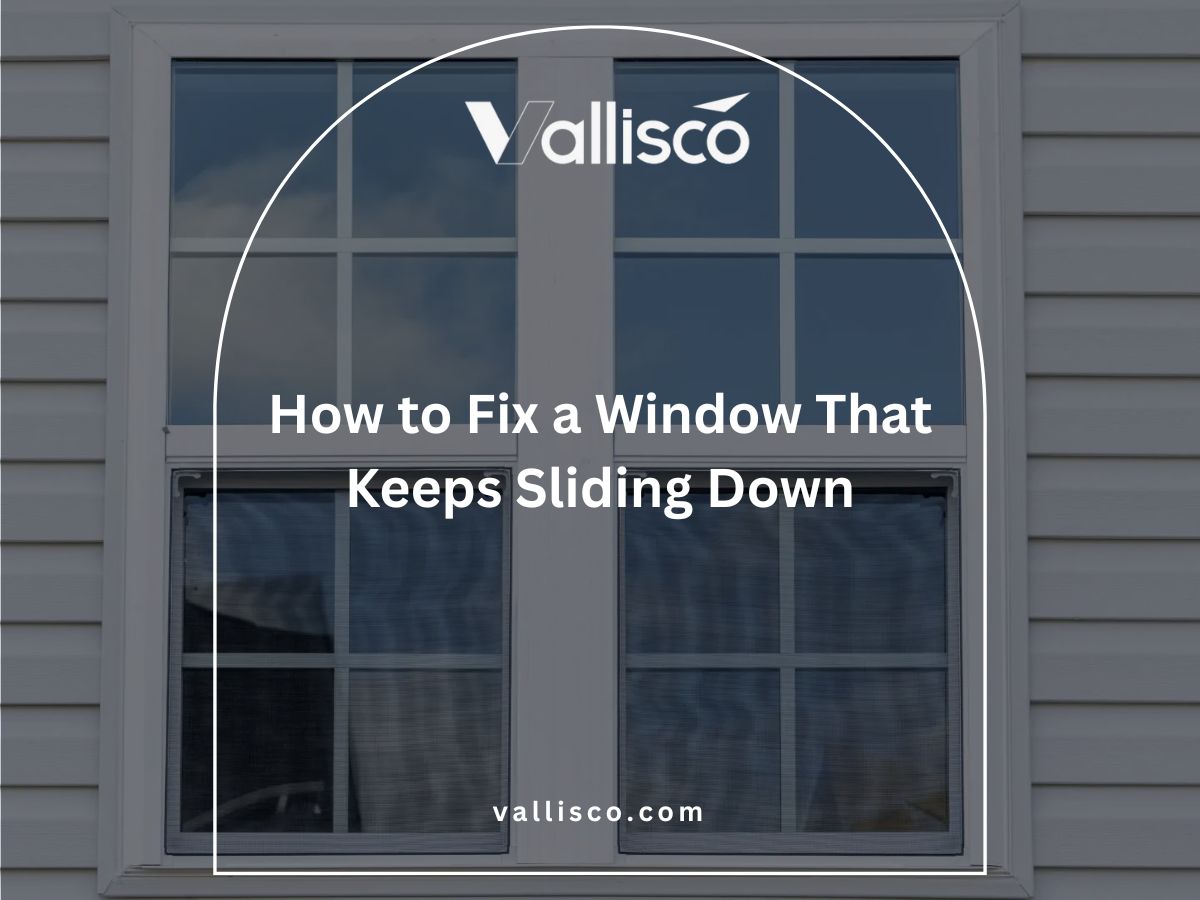A client once told me their kitchen staff spent extra hours each week dealing with doors that stuck or didn’t close properly. That small problem costs them both time and money.
If you’ve seen something similar in your own space, you know how the wrong choice can create constant stress.
I’ve worked with hotels, restaurants, and villa owners across Asia and Europe to solve these exact issues. Every review I share comes from experience with real kitchens like yours.
Here, you’ll see the 9 best types of commercial restaurant doors. Each option is reviewed with your business in mind, so you can make a confident choice.
The right doors keep your kitchen moving smoothly every day.
So, let’s begin!
Quick Overview Chart
Choosing the right door makes a big difference in how a kitchen works day to day. Each type has its own use, material, and benefit. The table below gives you a clear look at the main options before we review them in detail.
| Door Type | Best Use | Material / Build | Key Benefits |
| Stainless Steel Swing Doors | Busy kitchen entries | Heavy-duty stainless steel | Strong, hygienic, easy to clean |
| High-Speed Roll-Up Doors | Areas with frequent movement | PVC or reinforced fabric | Saves time, keeps air and temp control |
| Double-Action Impact Traffic Doors | Staff passing with hands full | Stainless steel, aluminum, or ABS | Swings both ways, impact resistant |
| PVC Strip Curtains | Walk-ins, loading zones | Flexible PVC strips | Low cost, keeps cold in, easy access |
| Fire-Rated Doors | Safety exits, kitchens near flame areas | Steel or metal with fire rating | Fire protection, safety compliant |
| Glass Swing or Sliding Doors (Tempered) | Front kitchen displays or divisions | Tempered glass with metal frame | Modern look, easy visibility |
| Cold Room Insulated Doors | Walk-in freezers and fridges | Insulated steel with gasket seal | Keeps temperature stable, energy saving |
| Aluminum Sliding Doors | Space-limited areas | Aluminum frame with glass or panel | Smooth sliding, lightweight, space saving |
| Flush Panel Doors (Food-Grade Laminate or FRP) | Food prep and storage rooms | Laminate or fiberglass reinforced plastic | Hygienic, moisture resistant, easy to clean |
These are the top choices businesses use in commercial kitchens today. Read more below for a closer review of each type and how it may fit your project.
1. Stainless Steel Swing Doors
I’ve seen stainless steel swing doors in more kitchens than any other type. There’s a good reason for that. They are simple, strong, and do the job well in busy restaurant settings. If you run a commercial kitchen, you’ll likely consider them first.
Purpose
- Built for High-Traffic Kitchens: These doors are made to handle constant opening and closing without slowing staff down. They keep the workflow smooth in busy hours.
- Supports Hygiene Standards: Restaurants need doors that meet food safety needs. Stainless steel works well here because it’s non-porous and resists bacteria growth.
- Adaptable to Different Layouts: Whether you have a narrow hallway or wide kitchen entry, swing doors can be installed in single or double form to match the space.
- Protects Against Kitchen Stress: Heat, steam, and spills don’t damage these doors. They’re built to keep shape even in tough cooking environments.
Features
- Durable Material: Stainless steel doesn’t chip or warp. Even with carts, trolleys, or heavy use, it holds up for years.
- Easy Cleaning: Smooth surfaces mean you can wipe them down quickly. That helps you keep kitchens looking clean without extra effort.
- Impact Resistance: Accidental bumps from staff or equipment don’t leave lasting marks. The doors can take hits without breaking or bending.
- Professional Appearance: The silver finish gives kitchens a sharp, modern look. If your doors are visible to customers, this is a plus.
Final Thoughts
Stainless steel swing doors are a strong option for commercial kitchens. They handle heavy daily use, meet hygiene needs, and give a professional appearance. Many businesses I’ve worked with rely on them because they simply perform well under pressure.
The trade-off is the higher upfront cost and heavier build compared to other materials. Still, the long lifespan and reduced repair needs usually outweigh those downsides. If you want a door that balances strength, safety, and long-term value, stainless steel swing doors are a dependable choice.
2. High-Speed Roll-Up Doors
I’ve worked with many kitchens where time is everything. In those cases, high-speed roll-up doors made a big difference. They keep staff moving fast while also helping with temperature control and cleanliness. If your kitchen needs both speed and order, these doors are worth a closer look.
Purpose
- Supports Fast Operations: These doors open and close in seconds, which keeps staff from waiting around. In a busy kitchen or storage area, that extra time saved adds up.
- Protects Temperature Zones: Roll-up doors are great for walk-in freezers, coolers, or areas where you need to separate hot and cold zones. They help reduce energy loss.
- Improves Safety: Quick open and shut functions reduce accidents from staff trying to push through heavy doors. Sensors can even stop the door if someone passes through.
- Reduces Contamination: By closing fast, these doors limit dust, pests, or outside air from entering food prep or storage areas. That helps protect food quality.
Features
- Rapid Operation: Most models can roll up in just a few seconds. This smooth action keeps the workflow moving without delays.
- Durable Fabric or PVC Panels: The material is light but strong. It stands up well to constant use without wearing down quickly.
- Optional Safety Sensors: Many high-speed doors come with motion sensors or automatic stops. This adds another layer of protection for your staff.
- Energy Efficiency: Because the door opens and closes so quickly, cooled or heated air doesn’t escape as easily. That helps you cut down on utility costs.
Final Thoughts
High-speed roll-up doors can make a clear difference in how your kitchen or storage area runs. They save time, reduce energy loss, and improve safety.
The downside is that these doors can be more expensive to install and maintain compared to basic swing doors. They also require a power source and occasional servicing. Still, if your kitchen operations rely on speed and controlled conditions, the benefits usually outweigh the costs.
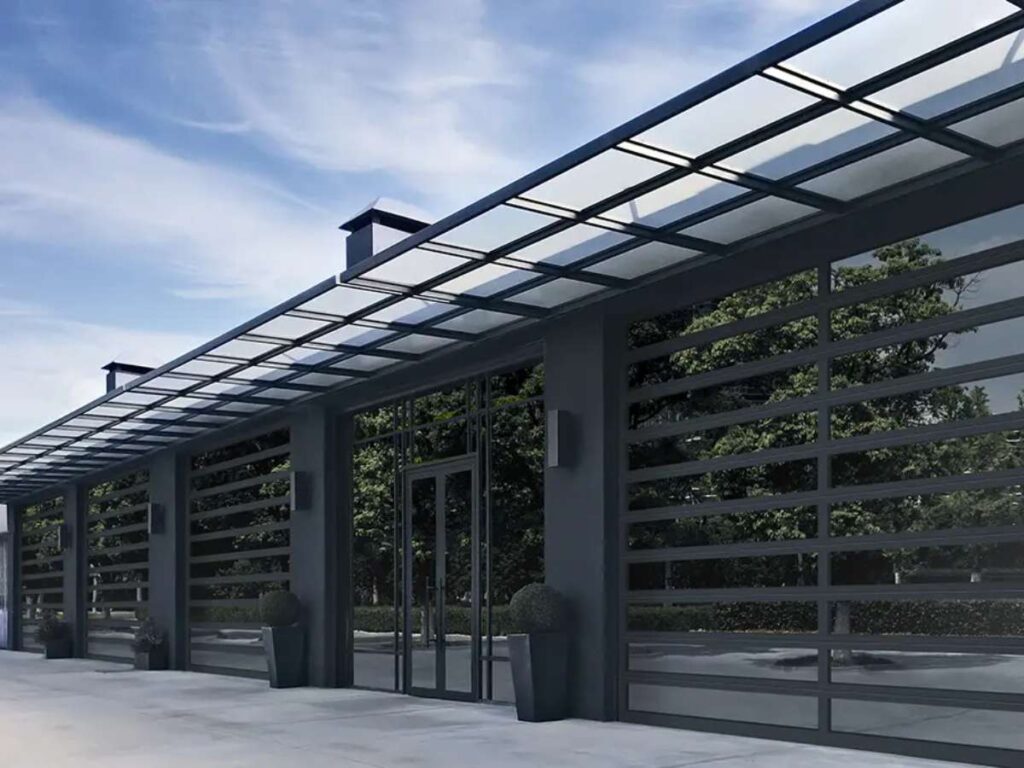
3. Double-Action Impact Traffic Doors
I’ve seen many kitchens choose double-action impact traffic doors because they make movement so much easier. Staff carrying trays or supplies don’t have to stop to push or pull. If your kitchen is always in motion, these doors can take the pressure and keep things flowing.
Purpose
- Supports Hands-Free Movement: These doors swing both ways, which means your staff can push through with their shoulders, carts, or trays. No handles to slow them down.
- Built for Busy Pathways: They’re perfect for spaces where people and supplies move in and out all day. The design reduces bottlenecks and keeps service running smoothly.
- Minimizes Accidents: Because staff don’t need to use their hands, there’s less chance of spills or dropped items. It makes work safer and faster.
- Separates Work Areas: Even though they swing easily, they still provide a barrier between hot kitchens and dining or storage areas. That separation is useful for both hygiene and noise control.
Features
- Double-Swing Design: Doors move in both directions, which saves time and effort for staff. They automatically return to a closed position.
- Impact-Resistant Panels: These doors are made with strong materials like stainless steel, aluminum, or reinforced plastic. They can handle bumps from carts and equipment without lasting damage.
- Clear Vision Panels: Many come with small windows so staff can see who’s coming from the other side. This reduces collisions in tight spaces.
- Low Maintenance Needs: Hinges and frames are designed for heavy daily use. They don’t need constant repairs, which is a plus for busy kitchens.
Final Thoughts
Double-action impact traffic doors are one of the most practical options for commercial kitchens. They allow quick, hands-free access, protect against collisions, and hold up against constant use. I’ve recommended them to restaurants and hotels that need speed and safety at the same time.
The downside is that they don’t provide the same level of insulation or sound blocking as heavier doors. They also may not look as polished for front-facing areas. Still, for back-of-house kitchens where efficiency matters most, they are a solid choice.

4. PVC Strip Curtains
I’ve noticed that many businesses use PVC strip curtains as a simple way to manage movement and temperature. They’re not as heavy-duty as swing doors, but they do the job well for certain areas. If your kitchen needs a low-cost and flexible barrier, this option is worth looking at.
Purpose
- Controls Temperature: Strip curtains help keep cold air in walk-in freezers and hot air in kitchens. They cut down on energy loss without blocking staff movement.
- Supports Easy Access: Staff can walk or push carts through without using their hands. This makes them handy in areas with frequent entry and exit.
- Blocks Dust and Pests: Even though they’re lightweight, strip curtains keep out insects, dust, and outside air. That extra layer helps maintain hygiene.
- Fits Loading or Storage Areas: Many kitchens use them for delivery entrances, cold rooms, or storage areas where you don’t want a heavy door slowing things down.
Features
- Flexible PVC Strips: Each curtain is made from overlapping strips that bend easily. They’re durable enough to handle constant pushing and pulling.
- Clear Visibility: Most are transparent, which means staff can see through to the other side. This reduces collisions and makes work safer.
- Simple Installation: Strip curtains are easy to install and remove. You don’t need complicated frames or hinges.
- Cost-Effective Option: Compared to other doors, strip curtains are affordable. They’re a practical solution for areas where budgets are tight.
Final Thoughts
PVC strip curtains are an economical way to manage airflow and movement in commercial kitchens. They’re flexible, easy to use, and improve hygiene by keeping out dust and pests. I’ve seen many restaurants and storage facilities rely on them for cold rooms and delivery zones.
The drawback is that they don’t provide the same level of insulation, fire protection, or impact resistance as solid doors. Over time, the strips can also wear down and need replacing.
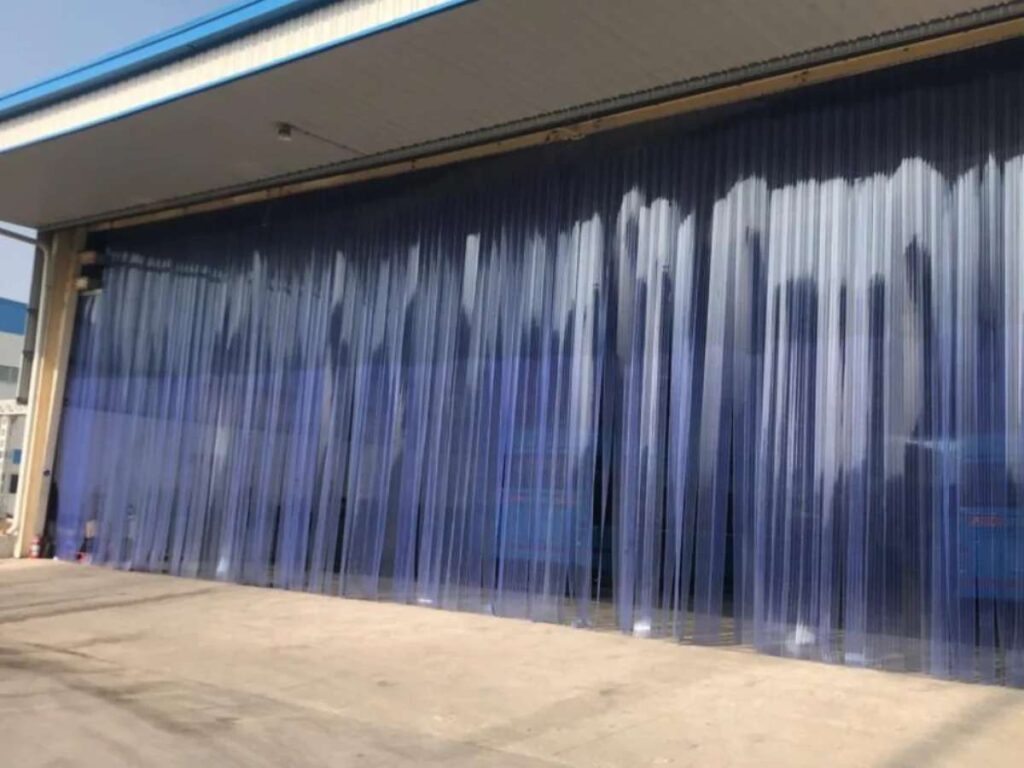
5. Fire-Rated Doors
I’ve worked with many clients who take safety as seriously as efficiency. Fire-rated doors are a must in kitchens and commercial buildings because they protect both people and property. If you’re running a restaurant, hotel, or large kitchen, these doors are not just an option, they’re often a requirement.
Purpose
- Meets Safety Standards: Fire-rated doors are designed to slow the spread of fire and smoke. They give your staff and guests more time to react in an emergency.
- Protects Property: By containing fire within a section of your building, these doors can reduce damage. That can save you significant repair costs later.
- Regulatory Compliance: Many local building codes require fire-rated doors in kitchens, exits, and storage areas. Having them installed keeps you in line with safety laws.
- Peace of Mind: Knowing your facility has this layer of protection helps you focus on daily operations without worrying about safety risks.
Features
- Steel or Metal Core: Most fire-rated doors are built with steel or reinforced metal that can withstand high temperatures. This structure is made to last.
- Fire Resistance Ratings: These doors come with ratings, such as 60, 90, or 120 minutes. The rating shows how long the door can resist fire before failing.
- Smoke Seals: Many models include intumescent seals that expand with heat. These seals block smoke from spreading into other areas.
- Self-Closing Mechanism: Fire-rated doors are often fitted with closers that shut the door automatically. This ensures they’re never left open by mistake. Vallisco, for example, manufactures fire-rated commercial restaurant doors that meet these standards.
Final Thoughts
Fire-rated doors are essential in commercial kitchens and related spaces. They meet safety standards, protect staff and customers, and help contain emergencies before they spread. I’ve seen businesses avoid major losses simply because the right fire doors were in place.
The downside is that they can be heavier, more expensive, and less visually appealing than other doors. Still, their role in safety and compliance far outweighs those drawbacks. If you’re managing a business where safety and regulations matter, fire-rated doors are a smart and responsible investment.
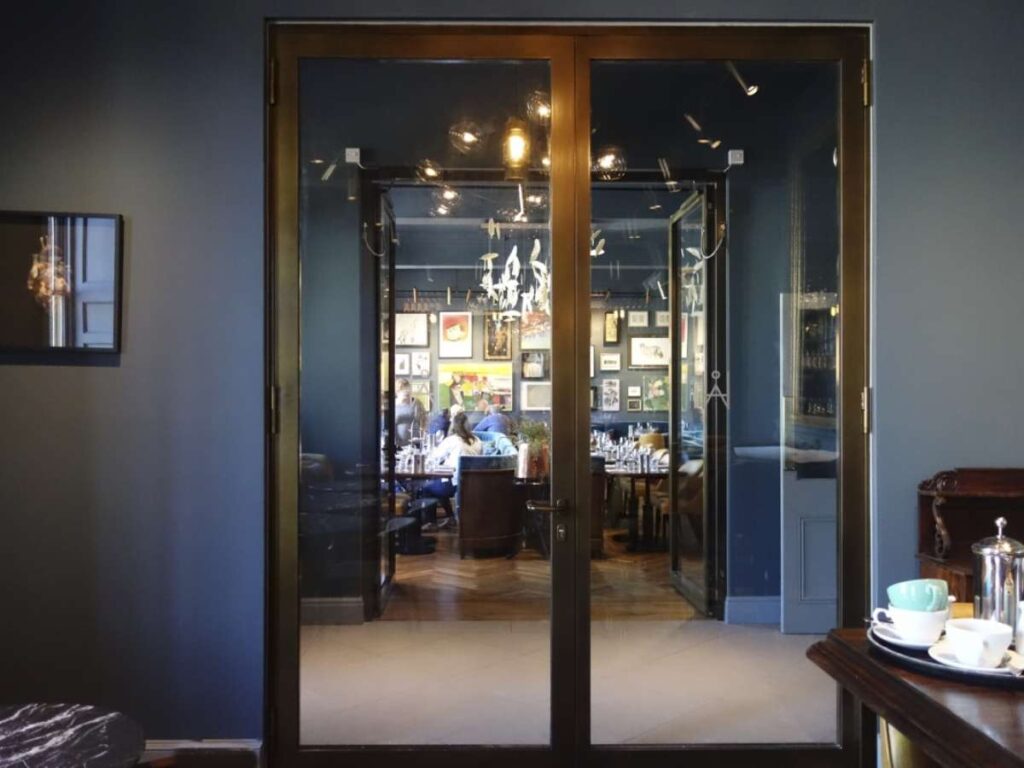
6. Glass Swing or Sliding Doors (Tempered)
I’ve worked with several clients who wanted doors that looked professional while still being practical. Tempered glass doors are popular because they offer both function and design. If you want a door that divides spaces without making your kitchen feel closed off, this type might suit your project.
Purpose
- Improves Visibility: Clear glass panels let staff see through to the next area. This reduces accidents and helps keep workflow smooth.
- Adds a Modern Look: Tempered glass gives kitchens, hotels, and dining spaces a sleek appearance. It’s especially useful if part of your kitchen is visible to guests.
- Separates Spaces Without Blocking Light: Glass doors keep areas divided while still allowing natural or artificial light to pass through. This makes spaces feel open and bright.
- Good for Front-Facing Areas: These doors work well at kitchen entrances, buffet lines, or open-kitchen designs. They create a professional impression while staying practical.
Features
- Tempered Safety Glass: The panels are heat-treated, making them much stronger than regular glass. If they do break, they shatter into small, less dangerous pieces.
- Swing or Sliding Options: You can choose based on your layout. Swing doors work well in wider areas, while sliding doors save space in tight hallways.
- Metal Frames for Support: Most models include aluminum or stainless steel frames. These add strength and keep the glass stable during daily use.Vallisco also produces tempered glass commercial restaurant doors that combine safety with style.
- Noise Reduction: Tempered glass doors can reduce sound between areas, which helps keep noise from spilling into dining or guest spaces.
Final Thoughts
Glass swing or sliding doors are a good option when you want to combine style with everyday function. They make spaces feel open, improve visibility, and give a professional touch to kitchens or hospitality settings.
On the other hand, these doors may not be as durable against impact as steel or laminate options. They can also be more expensive, especially with customized frames or finishes. Still, if your business values appearance and transparency along with practicality, tempered glass doors are worth the investment.

7. Cold Room Insulated Doors
I’ve worked with many clients who struggled with keeping their walk-in freezers and cold storage areas at the right temperature. That’s where insulated doors make a real difference. If your business relies on storing food safely, you’ll want doors that hold the cold in and keep energy waste down.
Purpose
- Keeps Temperature Stable: These doors are built with thick insulation to prevent heat transfer. They help your cold room stay at the set temperature without overworking the cooling system.
- Protects Food Quality: By keeping the environment consistent, insulated doors protect against spoilage. That’s especially important when storing meat, dairy, or fresh produce.
- Saves Energy Costs: Because they stop air loss, these doors reduce strain on your refrigeration units. That means lower utility bills over time.
- Complies with Food Standards: Cold storage areas often need to meet health and safety rules. Insulated doors support compliance by keeping food stored under proper conditions.
Features
- Thick Insulated Core: Most are built with polyurethane or similar materials inside the panel. This provides strong thermal resistance.
- Tight Gasket Seals: Doors come with gasket seals that prevent leaks around the edges. This keeps air inside stable and reduces frost buildup.
- Durable Metal Surface: Stainless steel or aluminum cladding protects the door from moisture and impact. This makes it last longer in harsh cold environments.
- Optional Heated Frames: In very cold freezers, frames can be fitted with heaters. This prevents the door from freezing shut during operation. Vallisco also manufactures insulated cold room doors built for heavy-duty commercial use.
Final Thoughts
Cold room insulated doors are one of the most important parts of any commercial kitchen that relies on frozen or chilled storage. They maintain the right conditions, keep food fresh, and help you avoid costly waste.
The downside is that these doors can be heavier and more expensive than basic models, and they require precise installation for the seals to work properly. Still, if your business depends on consistent storage conditions, insulated cold room doors are a smart long-term investment.
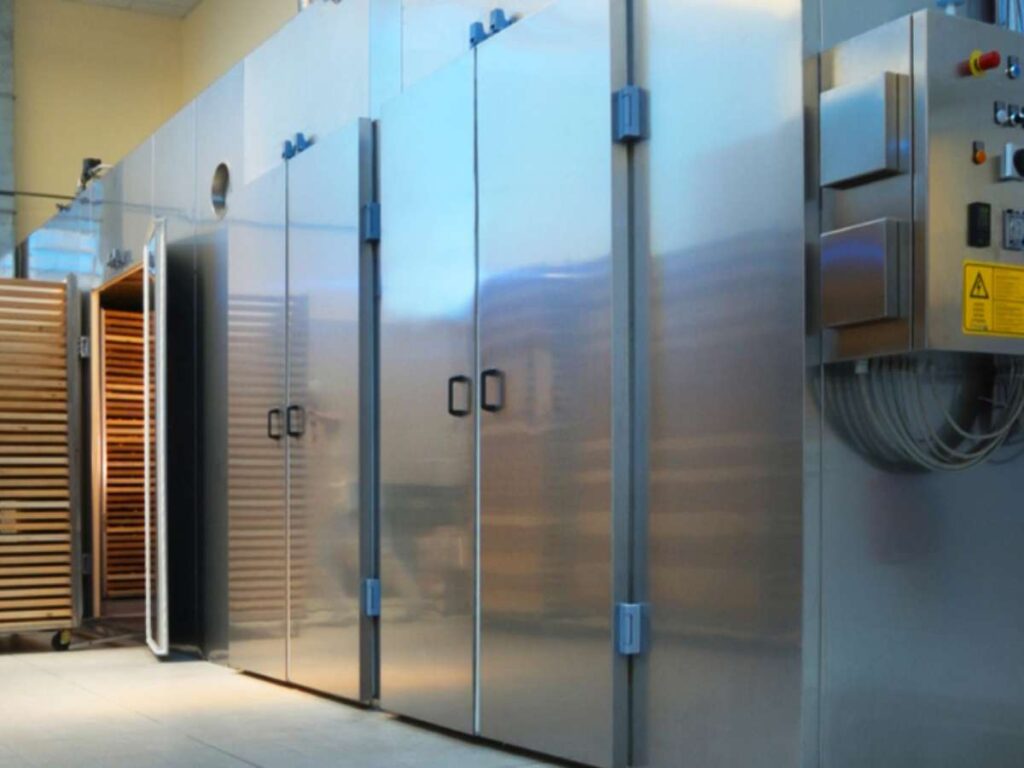
8. Aluminum Sliding Doors
I’ve recommended aluminum sliding doors to many clients who needed a space-saving option. They’re lightweight, easy to handle, and fit well in areas where swing doors would get in the way. If your kitchen or facility has tight spaces, sliding doors can help you use every inch efficiently.
Purpose
- Saves Floor Space: Sliding doors move sideways instead of swinging open. This is ideal for narrow hallways or storage rooms where every bit of space counts.
- Improves Accessibility: Staff can open and close these doors with minimal effort. That makes them convenient in high-traffic areas.
- Separates Work Areas: They’re useful for dividing kitchens, prep zones, or storage spaces without creating obstacles.
- Provides a Lightweight Option: Aluminum is strong but much lighter than steel. This makes the doors easier to operate while still lasting over time.
Features
- Aluminum Frame Construction: Frames are built to be sturdy yet lightweight. This gives the door both strength and easy handling.
- Smooth Sliding Tracks: Quality sliding systems use tracks that reduce friction. That means quieter and faster operation, even with frequent use.
- Optional Glass or Panel Inserts: Aluminum doors can be fitted with glass panels for visibility or solid panels for privacy. Vallisco also offers aluminum sliding doors designed for both kitchens and guest-facing areas.
- Corrosion Resistance: Aluminum resists rust, which is especially useful in humid kitchen environments. This helps extend the life of the door.
Final Thoughts
Aluminum sliding doors are a practical solution for kitchens and commercial spaces that need both function and space efficiency. They’re lightweight, easy to operate, and customizable with different inserts depending on your needs.
The trade-off is that they may not be as strong as stainless steel options or as insulated as cold room doors. Still, if your priority is saving space and keeping daily operations smooth, aluminum sliding doors are a smart and versatile choice for your business.

9. Flush Panel Doors (Food-Grade Laminate or FRP)
I’ve worked with businesses that need doors designed specifically for hygiene. Flush panel doors made with food-grade laminate or FRP (fiberglass reinforced plastic) are built for that purpose. If your facility handles food prep, storage, or processing, these doors can help you keep strict hygiene standards.
Purpose
- Supports Hygiene Standards: These doors are designed for food-grade use. Their smooth surface prevents dirt or bacteria from sticking, which makes cleaning easier.
- Protects Against Moisture: Flush panel doors don’t absorb water or swell. This is important in kitchens where steam, spills, and humidity are common.
- Suitable for Food Prep Areas: They’re often used in storage rooms, prep areas, or places where cleanliness is a top priority.
- Balances Function and Cost: Compared to stainless steel, laminate or FRP models are lighter and usually more affordable, while still offering durability.
Features
- Food-Grade Laminate or FRP Surface: The material is resistant to stains, scratches, and moisture. It’s built to meet industry hygiene standards.
- Non-Porous Finish: The smooth, sealed finish doesn’t allow bacteria or mold to grow. This makes it reliable for food-safe spaces.
- Lightweight Build: These doors are lighter than metal options, making them easier to operate while still strong enough for commercial use.
- Customizable Design: Available in different colors and finishes, so they can match the look of your facility. Vallisco also manufactures FRP and laminate commercial restaurant doors for clients needing food-safe solutions.
Final Thoughts
Flush panel doors with food-grade laminate or FRP are ideal if hygiene and durability are top priorities. They resist moisture, clean easily, and are designed to perform in commercial kitchens or storage areas.
The only drawback is that they may not offer the same level of impact resistance as heavy stainless steel doors. Still, for businesses where cleanliness and compliance matter most, flush panel doors are an effective and dependable choice.
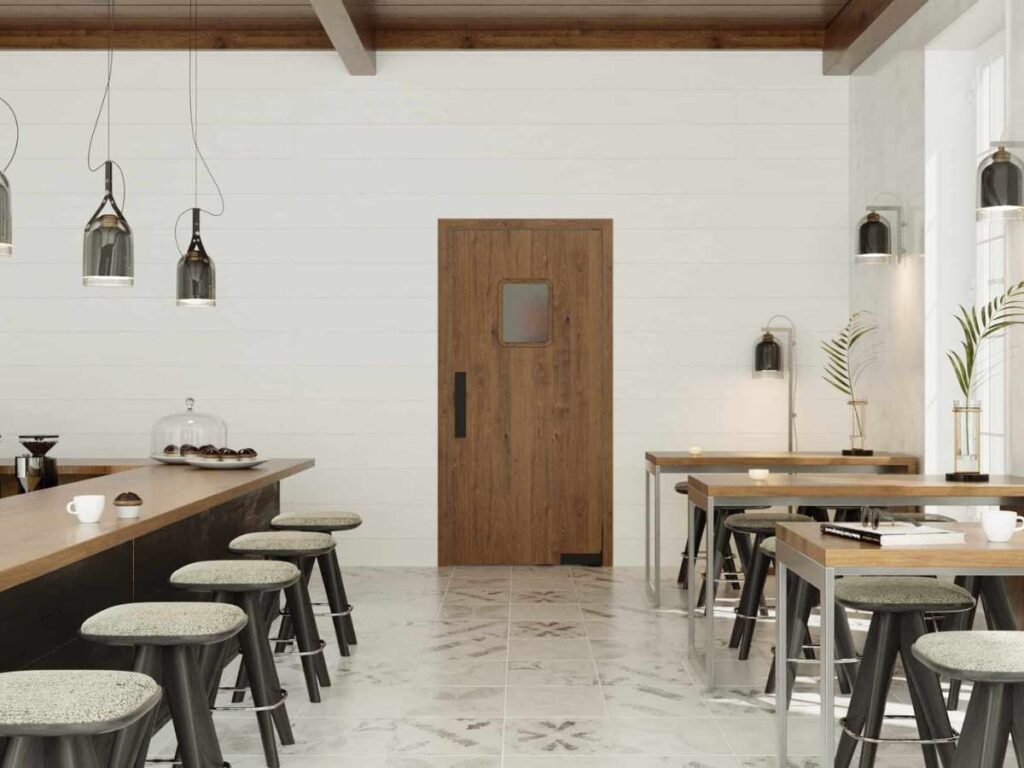
4 Essential Tips for Choosing Commercial Restaurant Doors
I’ve seen many businesses struggle because they picked the wrong doors for their kitchens or storage areas. The truth is, the right choice depends on how you use your space, not just the type of material. Here are some simple points to guide you when deciding what works best for your business:
- Think About Daily Use: Ask yourself how often staff will pass through the door. High-traffic areas need strong doors that open easily, while low-use areas can handle lighter options. Matching the door to usage prevents both wear and wasted costs.
- Look at Safety Requirements: Some areas, like kitchens near open flames or emergency exits, require fire-rated doors by law. Don’t overlook compliance—it protects both your staff and your investment. Meeting standards from the start saves you problems later.
- Balance Cost and Long-Term Value: It’s tempting to go for the cheapest option, but low-cost doors may not last. Consider durability, cleaning needs, and energy savings over time. Often, paying more upfront gives you a better return in the long run.
- Match Doors to Space: A sliding door might be perfect in a narrow hallway, while a swing door works best for wide entries. Glass can give a polished look for guest-facing areas, while laminate or FRP is better for food prep. Choosing the right fit for each location keeps your operations smooth.
Conclusion
Remember that kitchen I mentioned at the start? They solved their problem by replacing the wrong door with one designed for their workflow.
That simple change improved speed, safety, and energy savings. The same can happen for your business.
From stainless steel to FRP, each option we reviewed has strengths for different needs. This guide gives you the tools to choose wisely.
Now it’s your turn to act.
Vallisco has been helping businesses like yours with reliable commercial restaurant doors. Contact us today and take the first step toward improving your kitchen operations.
Learn More: Recommended Reads
Want to see more products? We’ve got plenty of options that might just be the perfect fit for you:
Still haven’t found what you’re looking for? Don’t hesitate to contact us. We’re available around the clock to assist you.



